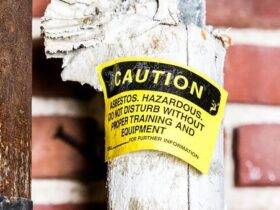While hammers have their uses, they’re simply not cut out for every job in construction or around the home. Hammers are essentially blunt objects capable of applying hard and direct force to a surface or something like a nail. Great for when you’re trying to drive nails into a solid surface, but not so great when you’re dealing with delicate materials. There comes a time when a slightly lighter touch is required, and rubber mallets are exactly what’s needed in these situations.
What is a Rubber Mallet
Although you might think a rubber mallet shares a lot of characteristics with a hammer, it does look similar after all, they’re actually very different tools. Metal hammers are best for applying force to an object, either to drive it through another material or to break it. On the other hand, rubber mallets are best used for carefully and gently manipulating materials that are normally quite fragile.
The head of this tool, as the name suggests, is crafted from lightweight and flexible rubber, or sometimes even plastic. This unique construction allows for a gentler touch, ideal for tasks where delicacy is key. With a rubber mallet in hand, you hold the power to navigate fragile materials like wood, bricks, or certain metals without fear of unsightly cracks or dents. Embrace the versatility of this surprising tool as it effortlessly applies force while minimizing damage.
Uses of a Rubber Mallet
The main advantage of a rubber mallet is that its head is less likely to cause damage when used to move and manipulate materials. This makes it ideal for the following purposes:
- Forming sheet metal – The soft head of the mallet is unlikely to cause dents or scratches to the sheet metal, allowing you to form it without any issues. Even though it’s lighter and provides less of an impact, it’s still suitable for forming metal.
- Move panels of drywall into the right place – Using a hammer to move a panel of drywall would create holes in the surface of the material, which would obviously ruin the project. The rubber mallet allows you to carefully position your drywall without damaging it.
- Tap ceramic tiles or bricks into place – While they have a hard surface, bricks and ceramic tiles can be brittle, and the force of a hammer could damage them. A mallet can be used to gently position them, preventing cracks or breaks, which could be unsafe.
- Close a paint can lids – When painting and decorating, paint can lids are notoriously difficult to get back on, as paint often dries around the rim of the can. You can use a rubber mallet to gently close the lid without causing dents that could affect the paint.
- Removing rusted screws – If you have rusted screws inside a piece of wood or other material, you’ll want to have a way to get them out carefully without causing any damage. A rubber mallet is often the best tool for the job.
Issues With Using a Rubber Mallet
While a rubber mallet presents a less damaging alternative to a conventional hammer, it still demands careful and safe handling to avoid potential issues. Due to the inherent elasticity of rubber, exercising substantial force with the mallet necessitates additional caution.
The mallet has the propensity to rebound unexpectedly, underscoring the importance of wearing safety glasses as a precautionary measure. While heavier rubber mallets may exhibit reduced rebound, they do pose an elevated risk of inflicting greater impact-related damage.
Furthermore, it is essential to acknowledge that the surface of a rubber mallet can gradually deteriorate over time, particularly when exposed to adverse environmental conditions or subjected to frequent heavy-duty use. The appearance of shredded areas or the formation of holes signals a decline in its effectiveness, necessitating the replacement of the mallet head with a new one to ensure continued optimal performance.

































Leave a Reply